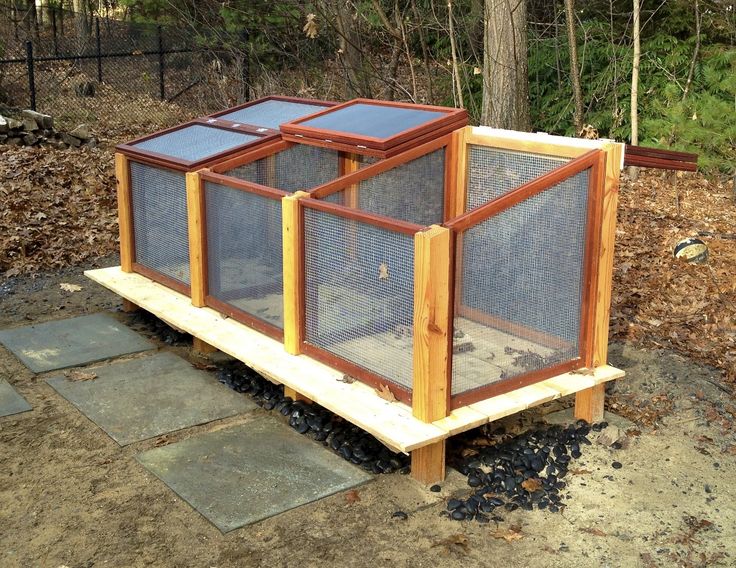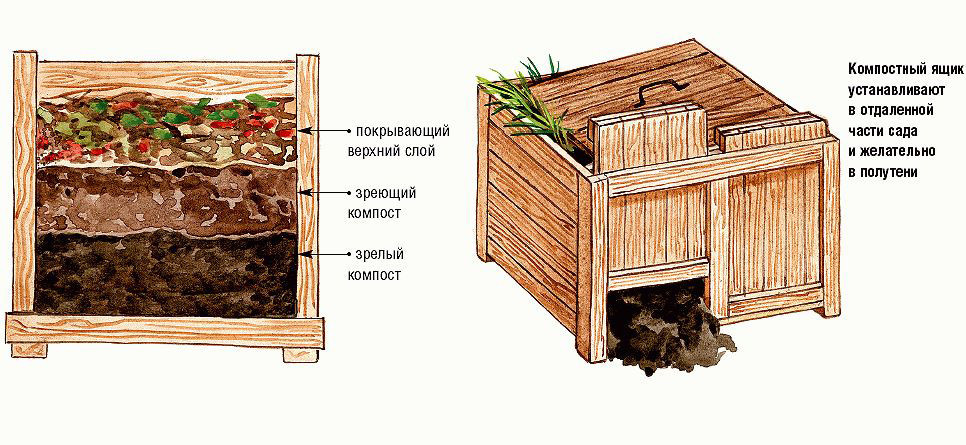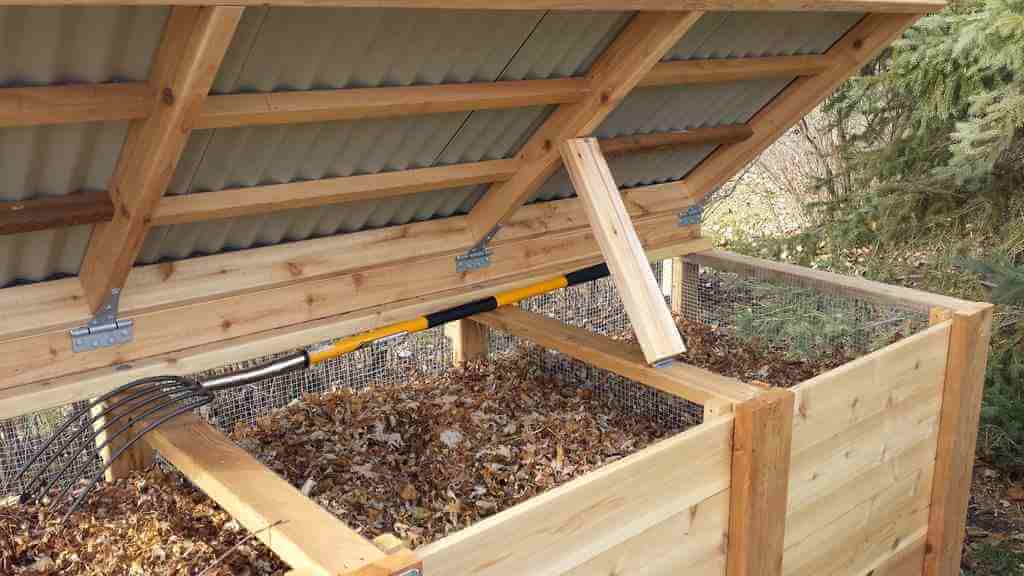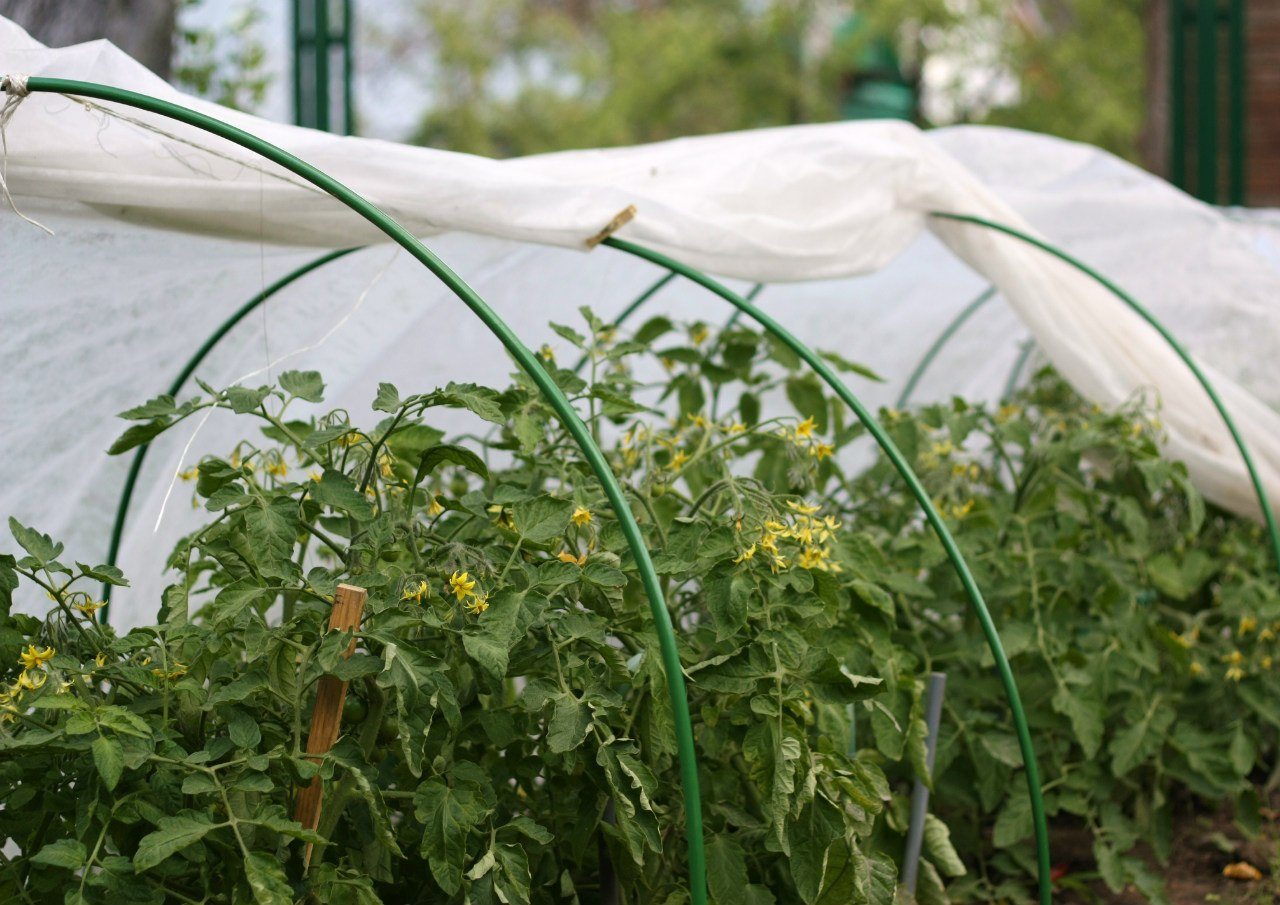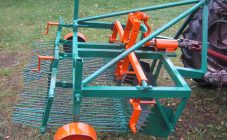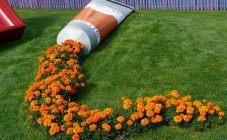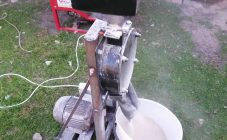Content:
Compost is a natural, environmentally friendly biofertilizer. Making a composter with your own hands for laying cut grass, weeds, branches is not difficult if you follow a certain scheme and technology. The main thing is that oxygen is supplied to the organic matter, and the humidity in the box is at least 55%.
Compost bin options
Today, do-it-yourself garden composters for summer cottages are becoming popular among the people, since they do not require special financial investments, they are made quickly from scrap materials. Tank options:
- ordinary wooden box;
- a plastic container in the form of a container with openings for free oxygen access and ventilation inside;
- thermal composter for keeping heat and performing chemical processes all year round.
Compost bin requirements
The box is designed for storing waste, their gradual transformation into humus (nutrient medium) for plantings. This is the simplest and most compact design, in contrast to the usual compost pit, where many summer residents still prefer to dump garbage for composting.
Benefits of a composter box:
- the ability to drill side holes for ventilation and an unobstructed flow of oxygen;
- the presence of a cover that prevents the ingress of atmospheric precipitation inside, the washing off of useful components into the soil.
A box with a lid or a composter for giving with your own hands according to the drawing can be built from 2 sections, one of which is with removable frontal boards. You can customize the compost bin to dump heaps of rubbish to your liking.
The main requirements are:
- A place. It is better to place the box out of direct sunlight.
- Latitude. For faster maturation of the compost, the container must be wide.
- A secure bottom so that waste does not go into the soil.
- Availability of openings for unhindered access of air and oxygen to the lower layers of the compost.
- Cover to prevent the useful components from being washed off by rain.
- Impregnation. The tree rots quickly, so it is important to treat the bottom and walls with an antiseptic (hydrophobic impregnation). If the composter will be made of pallets or lumber, then the base must be flat.
It is reasonable to equip the composter with a lid on top, which will give the structure not only an aesthetic look to the summer cottage, but also protect the contents of the box from the hot rays of the sun in summer, and will maintain optimal humidity inside.
Making a compost bin with your own hands
You can make containers from the following materials:
- wooden boards;
- pallets;
- plastic barrels;
- fruit boxes;
- slats;
- metal corners;
- plastic;
- polyethylene:
- Rabitz;
- pallets;
- barrels;
- plywood;
- slate.
In order to make a reasonable choice of material, first of all, it is worth deciding which compost will be replaced for storage and for what purpose.
Today manufacturers offer different models of composter for summer cottages. But it's easier to make garden composters with your own hands, and here are the manufacturing options:
Wood planks
Wood is an affordable, easy-to-work material. You can make a structure of 2-3 sections. Why prepare:
- edged board (thickness - 3 cm, width - 9-10 cm);
- bars (thickness - 5 cm, length - 120 cm, 8 pcs.);
- nails;
- screws;
- fine-meshed plaster mesh;
- special impregnation to prevent wood from rotting later;
- handle, hinges for the production of the box lid;
- paint (enamel, oil) to make the box look aesthetically pleasing;
- dry branches to create drainage;
- latches (3 pcs.) or a locking mechanism, if you make a box with doors for easy extraction of fertilizer from the structure.
To make a wood composter:
- dig the supports into the ground to a height of 0.2 m;
- fill boards, leaving gaps or drill holes when building a blind structure;
- make the bottom for the box from slate;
- line up the door at the bottom.
Board boxes
You can make a garden composter with your own hands from boards from the boxes, having previously disassembled them into planks, collecting a simple ventilated structure of 4 walls, leaving a distance between the planks of 0.7-1 cm. The following steps:
- make 2 partitions for dividing the box into 3 compartments;
- hang the lower part of the front wall of the box on the hinges for unhindered dumping of the contents, easy opening of the door;
- make a cover of 2 slopes, leaving the first stationary, the second - attach it to ordinary window hinges so that the cover does not sag at the moments of opening and rests on the adjacent slope;
- screw screws and galvanized staples to the side posts;
- attach the lower and upper part of the front wall to the hinges;
- collect the floor or bottom of the box from the slab, leaving slots for water to drain;
- nail down wooden blocks and props, without installing the structure on bare ground;
- send the bottom with a metal mesh with cells to avoid gnawing by rodents and to increase ventilation properties.
Pallets
Assembling the composter from pallets is not particularly difficult. The main thing is to choose the optimal place for placement so that the laid compost does not dry out in the sun.
For manufacturing it is necessary:
- to loosen the soil at the installation site in order to ensure free access to worms, microorganisms from the soil for waste processing;
- pick up 4 solid pallets, 120 × 100 cm in size, 3-14 cm thick;
- make pallets in the form of a cube, placing the long side horizontally on the ground;
- connect together with galvanized nails, screws, metal plates;
- attach to pre-installed racks;
- make cuts with a jigsaw;
- assemble the structure, setting the boards in a vertical position and 1 side - at an angle;
- foaming the seams with assembly glue;
- install the box;
- paint with an antifungal solution for a long service life;
- hang a lid for easy transfer of the container to another place if necessary.
When assembling all the walls of the composter from a barrel, pallets, it is better to mount hooks for ease of locking and opening.
Slate
Slate is a durable material. Before manufacturing, it is worth choosing the optimal place, digging a hole and measuring the size, then:
- install supports made of metal pipes in small recesses;
- lay slate sheets around the perimeter of the pit;
- divide the resulting container into 2-3 parts from the same slate sheets.
Concrete
The compost pit can be simply filled with concrete, which will last for decades.
For production:
- make a pit 3 m long, 2 m wide, 7-8 cm deep;
- make formwork inside the pit;
- prepare a cement slurry composed of gravel, sand, cement, diluted with water;
- fill the formwork with mortar;
- build a cover for the pit from a chain-link mesh or wooden boards, leaving gaps between them so that normal ventilation is not disturbed.
Composting Pros Tips
Professionals advise:
- It is not recommended to use plastic in composting devices. Plastic is not an environmentally friendly material that releases toxins. Has a low air permeability. If you use it to equip the side walls of the box, then do not forget about making holes.
- It is not wise to make a compost bin from purchased, expensive materials. For example, old boards are an excellent material with a long service life, and from solid boards they will last even longer.
- If made of slate, then the content in it will be re-milled more slowly. Whatever material is used, the main thing is that it does not heat up much, does not accelerate the process of compost maturation. Otherwise, the grass will begin to burn out quickly in the box, and the soil, when applying such fertilizer, will turn sour.
- The bottom of the container must be made of non-rotting material and without a strong deepening into the ground. Any contact of the compost with the soil is unacceptable. It is better if the door of the drawer matches its width. It is important to get a dense and homogeneous compost at the exit after overheating, so the door should be easy to open (close) in order to easily add a new layer of grass on top or level it at the bottom.
- Construct tanks 1 cube in size from 3 compartments. In one it will be possible to store the remains of rotted vegetation, in the other - compost, in the third - humus.
- It is reasonable to place the composter in the country 9-10 m from the house and 18-20 m from the water.
- It is important to make ventilation holes in the container to ensure free flow of air inside and cover it with a lid to avoid precipitation, washing off nutrients from the compost into the soil.
On the Internet, you can find diagrams, photos, videos of various options on how to make attractive garden composters from tires, barrels, pallets and boards in the country with your own hands. The main purpose of the purpose is to end up with high-quality fertilizer, therefore, before production, it is important for gardeners-summer residents to decide in what way the structure is made, for example, according to Finnish technology, Russian or other, will be the best option.
